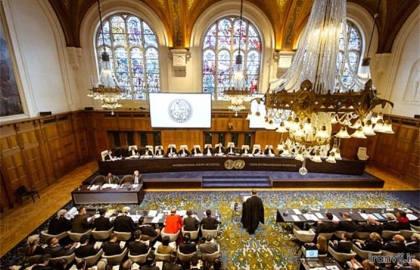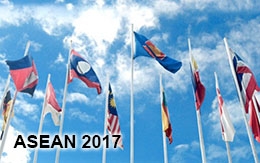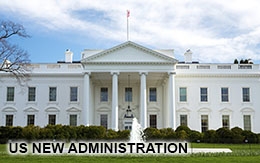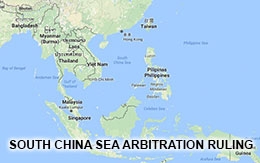The South China Sea one year after Arbitral Award: The Calm before the Storm?
Although the South China Sea award has brought much clarity to the scope of the disputes and opened possibilities for peaceful dispute management, the situation in the South China Sea in the past year tends to tell a different story.

It has been one year since the Arbitral Tribunal established under Annex VII of the 1982 United Nations Convention on the Law of the Sea (UNCLOS) issued the first ever award on some aspects of the South China Sea disputes. The award has brought much clarity to the scope of the disputes and opened possibilities for peaceful dispute management. The situation in the South China Sea in the past year, however, tends to tell a different story.
Fragile Calmness, Strong Undercurrent
At a glance, the South China Sea seems tranquil. Since the release of the award, there has been no reported severe incidents. In comparison to 14 cases of 2016, ten of 2015, only two incidents between law enforcement forces of littoral states in the South China Sea were reported in the first half of 2017. Furthermore, after the award, Filipino fishermen were welcomed back to their traditional fishing ground around the Scarborough Shoal. Surprisingly, Filipino President Durterte then suggested the prohibition of fishing activities at the Scarborough and establishment of a marine sanctuary in this area. Most noticably, on 18 May 2017 in Guiyang, China and ASEAN reached agreement on the framework of a Code of Conduct (COC). The full COC is expected to be finalised by the end of 2017. Chinese Vice Foreign Minister Liu Zhenmin immediately hailed that all parties upheld the framework of regional rules to manage and control disputes, to deepen practical maritime cooperation, to promote consultation on the code and jointly maintain the peace and stability of the South China Sea. This seems to match the calls for cooperative mechanisms among the South China Sea littoral countries that Liu Zhemin put forward at the BOAO Forum in March this year.
Despite efforts to portray a benign picture of a calming sea, the actual situation in the South China Sea is not quite moving in that direction. The status quo in the South China Sea continues to subtantially change in the past year. While the region was engaged in peaceful discussions for the COC framework, certain countries expedited their power projection capabilities by constructing military and dual-use facilities on the near completed artificial features in the South China Sea. New missile shelters, radar/communications facilities, and other infrastructures have been rapidly erected on those reclaimed features. An ADIZ in the South China Sea, forecasted as a reaction after the award, has yet to happen, but nuclear bombers are frequently sent over to show capacity to control the air spaces over the South China Sea. Under the seabed of key waters in the South China Sea, a system of long-term national underwater observation platforms is being planned. This system, which is similar to the US’s sound surveillance system (SOSUS) during the Cold War, could be used to detect and monitor submarine activities. Besides, the success of exploiting hydrate natural gas in the South China Sea, which is seen as a leap forward in marine research and a technological breakthrough in the quest for alternative energy, would add another strategic value to the South China Sea and may prompt a new round of fierce competition.
The new developments in the South China Sea led to the strengthening of military capacity in the region. The limited sea spaces of the South China Sea become a regular site for drilling and military capacity demonstration. Incidents like military aircraft close encounters/ interceptions or military drone seizures could easily escalate into conflicts in the South China Sea due to misperception. Tensions in the South China Sea may even easily expand to the so-called second island chain, evidenced by incidents such as that at Benham Rise.
Rightness versus Mightiness Dilemma
Developments on the South China Sea post Arbitral Award go against its conclusions. The award has made a significant contribution by providing a sharp legal basis for maritime entitlements in the South China Sea. Accordingly, the nine-dash line is no longer a valid source to generate maritime rights. All high tide features of the Spratlys have no exclusive economic zone (EEZ) and continental shelf. A number of activities including the interference to the fishing and hydrocarbon activities within the EEZ and continental shelf of the Philippines, the constructions on some low tide elevations, and the dangerous navigation practices are infringements of Filipino sovereign rights and jurisdiction.
Based on the conclusion of the award, littoral states, therefore, have solid legal basis to protect their sovereign rights and jurisdiction over the EEZ and continental shelf generated in accordance with UNCLOS. On the other hand, no legal room is left for littoral states to make any compromise on sovereign rights and jurisdiction in the South China Sea due to mounting domestic pressure as well as domestic legal frameworks. For example, conducting joint development within the Philippines' EEZ is prohibited under its Constitution.
Meanwhile, China’s Supreme Court issued a regulation on judicial interpretation to extend its jurisdiction to cover not only inland waters and territorial seas, but also regions including contiguous zones, exclusive economic zones, continental shelves, and other sea areas under China's jurisdiction. The term “Other sea areas under China’s jurisdiction” indicated additional maritime entitlements to those based on UNCLOS. Indirect threat through power projection and even direct warning to “go to war” were used to back up assertiveness in the field. Economic incentives under the Belts and Roads Initiative further helped buying the silence of public opinions.
The conclusion of the COC framework with ASEAN, in this context, was considered a tactic to shift the debate over the South China Sea away from the 12 July Award and to redirect the international attention away from actual developments in the South China Sea. Immediately after the conclusion of the COC framework, Chinese Vice Foreign Minister Liu Zhenmin noted on Chinese state television that the framework agreement took the concerns of all parties into account. In this regard, he said, “We hope that our consultations on the code are not subject to any outside interference”. The call for outsiders not to meddle up in the South China Sea was also frequently transmitted through media.
Critical Time for Reaction
After the Arbitral Award, Malaysia took the initial step in reaffirming its maritime rights and opposing the existence of any overlapping territorial claims in the South China Sea. Malaysian Foreign Minister Datuk Seri Anifah Aman stated that Malaysia and other ASEAN nations, who are claimants to the territories also claimed by China, do not acknowledge the republic’s “nine-dash line” argument, as it was not in accordance with international law, including UNCLOS. Indonesia also strengthened its weaponry system on Natuna Island, renamed part of the South China Sea to North Natuna Sea and ruled out any possibility for compromise on the South China Sea issues. Two FONOP missions have been conducted in the South China Sea under the Trump’s administration to challenge the limitations on navigation in the South China Sea and the sovereignty claim over the Mischief - a low tide elevation, which is part of the continental shelf of the Philippines as ruled by the arbitral tribunal but is being occupied and claimed by China. However, these reactions were not enough to stop the rapid changes on the ground.
The past year in the South China Sea witnessed substantial changes in the fields. These changes, however, were at least conducted quietly and in an unprovoked manner. This means that while full compliance is far from being realized, the award has still produced impacts to prompt the parties to exercise restraint and act in accordance with international law. The future of the South China Sea, in this regard, will largely depend on the willingness of the Philippines, claimant states and other stakeholders to uphold international law and the current rule based order. The Philippines was urged to raise the arbitral award while it still can. The same approach should be applied to the other claimants and others, who are keen to support the current rule based order.
Based on the conclusion of the award, functional cooperation between littoral states and relevant sea users should be promoted to mitigate potential conflicts, ensure safety of navigation and overflight, and preserve the marine environment of the South China Sea. Major new development in the South China Sea relating to militarization, which was not covered by the arbitral award and not capable of being settled by UNCLOS, should receive greater attention and discussions in and out of the region. Without joint effort, a new order based on mightiness may become a bitter reality in the South China Sea.
Dr Nguyen Thi Lan Anh is based at the Bien Dong Institute for Maritime Studies at the Diplomatic Academy of Vietnam. The views are strictly her own and do not necessarily reflect any official position.










